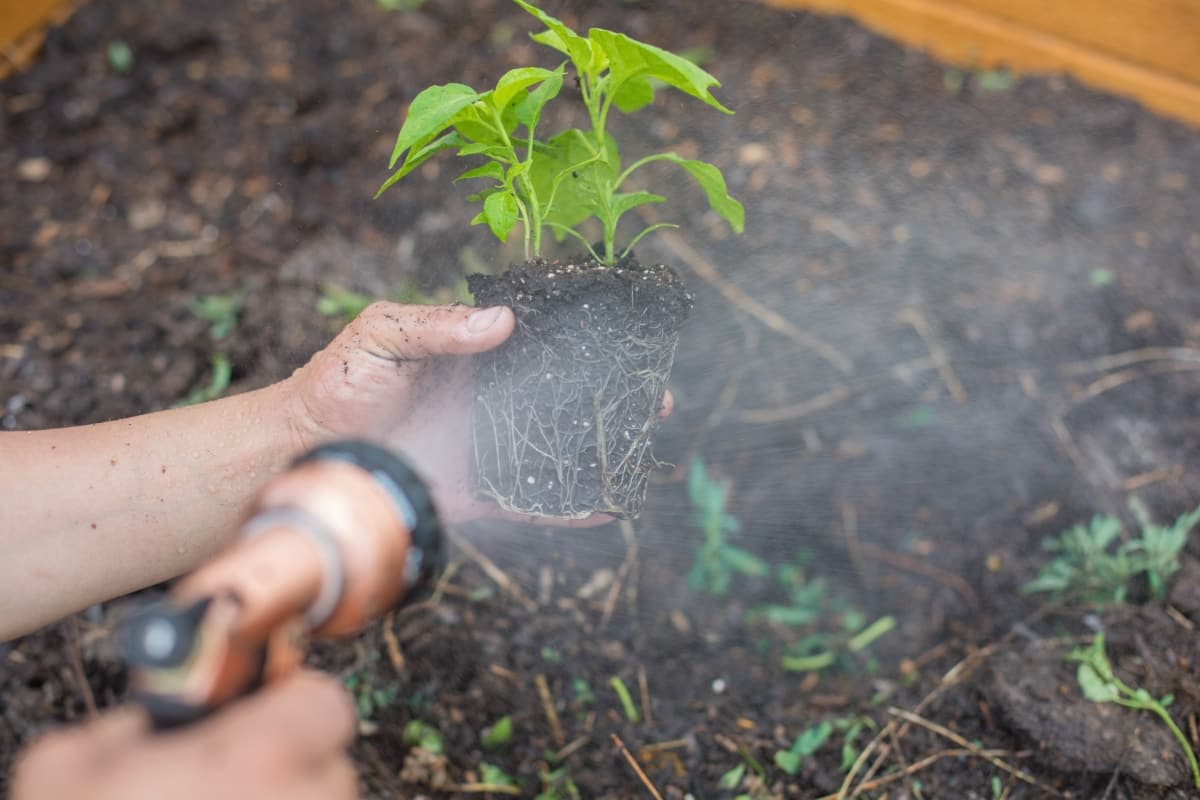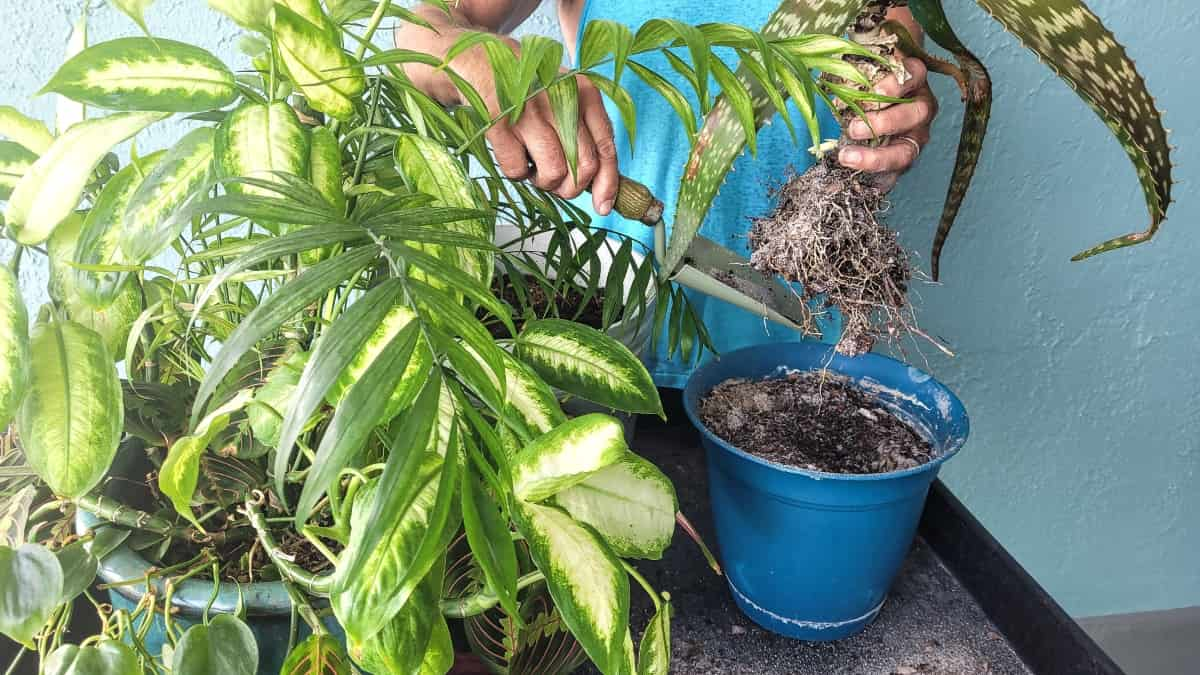Neem oil, extracted from the neem tree’s seeds, has gained acclaim as a natural and eco-friendly solution for pest control in agriculture. Among its many applications, neem oil stands out as an effective remedy for combating nematodes and microscopic worms that can havoc on plant roots, stunting growth and causing diseases. As an alternative to synthetic pesticides, neem oil offers a sustainable and biodegradable option, promoting a balanced ecosystem and safeguarding plant health.

Neem Oil Application for Nematodes Control
Neem Oil and its Benefits for Nematodes
Neem oil’s potency against nematodes lies in its multifaceted properties. It contains azadirachtin, a compound known for disrupting the life cycle of nematodes, inhibiting their growth and reproduction. Additionally, neem oil acts as a repellent, deterring nematodes from settling around plant roots. Its natural composition makes it safe for plants, beneficial insects, and the environment, providing an organic and sustainable approach to nematode control.
Furthermore, neem oil possesses antifungal and antibacterial properties, offering a comprehensive defense against potential secondary infections that may arise due to nematode damage. By incorporating neem oil into plant care routines, growers can foster healthier crops without resorting to harsh chemicals.
How to Prepare Neem Oil to Use on Nematodes
Start by obtaining cold-pressed neem oil, ensuring its purity and effectiveness. To create a nematode-fighting solution, mix one to two tablespoons of neem oil with a mild liquid soap or insecticidal soap. The soap works as an emulsifier, helping the oil disperse evenly in water. Stir the mixture thoroughly, ensuring a homogenous blend.
Next, dilute this concentrate by adding one gallon of water, creating a neem oil solution suitable for application. Utilize a sprayer to evenly coat the soil around plant roots evenly, targeting the nematodes’ habitat. Apply the neem oil solution as a soil drench, ensuring thorough coverage.
How to Apply Neem Oil on Nematodes
Begin by selecting a time when the soil is moist but not waterlogged, promoting absorption. Thoroughly water the soil around the affected plants a day before application to enhance neem oil penetration. Shake the neem oil solution vigorously to maintain its emulsification. Utilize a sprayer to distribute the neem oil solution evenly over the soil surface, concentrating on the root zone. Ensure thorough coverage, as nematodes inhabit the soil around plant roots.
Additionally, it’s advisable to apply neem oil during the cooler parts of the day, such as early morning or late evening, to minimize evaporation and maximize absorption. Repeat the application every two to three weeks, or as needed, throughout the growing to break the nematode life cycle effectively. This systematic approach ensures that neem oil remains a potent ally in the ongoing battle against nematode infestations, promoting plant health and vitality.
Mixing and Dilution for the Right Concentration of Neem Oil for Nematodes
Start by selecting a high-quality, cold-pressed neem oil to ensure the presence of key active compounds. To create a neem oil solution suitable for nematode control, mix one to two tablespoons of neem oil with a mild liquid soap or insecticidal soap. The soap serves as an emulsifier, allowing the oil to disperse uniformly in water.
In case you missed it: Neem Oil Application for Gall Mites Control: Natural Way to Get Rid of Gall Mites on Plants

Stir the mixture thoroughly to achieve a consistent blend. Subsequently, dilute this concentrate by adding 4 liters of water, creating a neem oil solution ready for application. The resulting mixture maintains an effective concentration without causing harm to the plants.
How Long Does Neem Oil Stay Effective on Nematodes?
The effectiveness of neem oil on nematodes can vary depending on factors, including environmental conditions, application frequency, and the severity of the nematode infestation. Generally, neem oil exhibits residual activity that persists for a limited period, necessitating regular applications for sustained control.
Neem oil’s impact on nematodes is not immediate, as it disrupts their life cycle rather than providing instant eradication. Its effectiveness often becomes noticeable over time, especially in breaking the reproductive cycle and reducing nematode populations in the soil. For optimal results, apply neem oil every two to three weeks during the growing season when nematode activity is at its peak.
Using Neem Oil Along with Other Pest Control Methods
In integrated pest management strategies, combining neem oil with other control methods enhances overall efficacy and promotes a holistic approach to pest management. When dealing with nematodes, pairing neem oil with practices like crop rotation, soil solarization, and the use of nematode-resistant plant varieties amplifies the control measures. Crop rotation disrupts nematode life cycles, while soil solarization employs heat to reduce nematode populations.
Neem oil complements these techniques by providing ongoing control and targeting nematodes directly in the soil. Additionally, incorporating beneficial nematodes, which are natural predators of harmful nematode species, further strengthens the biological control aspect. This multi-pronged approach not only addresses current infestations but also creates a more resilient and sustainable agricultural environment, minimizing the reliance on synthetic pesticides.
Some Common Pests and Diseases that Neem Oil Can Control on Nematodes
Fungal Diseases (e.g., Powdery Mildew, Rust): Neem oil’s antifungal properties make it effective against various fungal diseases. It forms a protective barrier over the plant surfaces, inhibiting the growth and spread of fungi. Powdery mildew and rust are examples of fungal diseases that neem oil can help control.
Bacterial Diseases: Neem oil’s antibacterial properties contribute to the control of bacterial diseases. It hinders the development of harmful bacteria, protecting plants from infections.
Insect Larvae and Eggs: Neem oil disrupts the development of insect larvae and eggs, serving as a preventive measure against future pest infestations. This aspect of neem oil contributes to its role in integrated pest management.
In case you missed it: Neem Oil Application for Spider Mites Control: Natural Ways to Control Spider Mites on Plants

How to Monitor the Effectiveness of Neem Oil on Nematodes
- Observe the treated area for signs of reduced nematode activity, such as improved plant growth, and decreased symptoms of nematode damage, such as stunted growth and yellowing.
- Conduct soil assessments to measure nematode populations before and after neem oil applications.
- Soil sampling and laboratory analysis can provide quantitative data on nematode populations.
- Additionally, monitor plants for any resurgence of nematode-related issues, adjusting the frequency of neem oil applications if necessary.
- Consistent and systematic observation ensures timely adjustments to the treatment plan, maximizing the impact of neem oil on nematode control.
Safety Precautions to Take when Using Neem Oil on Nematodes
- Wear protective clothing, including hand gloves and goggles, when handling neem oil to prevent skin and eye irritation.
- Avoid inhalation of neem oil fumes by working in a well-ventilated area. Dilute neem oil according to recommended concentrations to prevent potential phytotoxicity.
- Apply neem oil during cooler parts of the day to minimize stress on plants and maximize absorption. Keep children and pets away from treated areas until the solution has dried.
- Perform a patch test on a small area of the plant before widespread application to ensure compatibility.
- Store neem oil in a dark and cool place, away from direct sunlight. If accidental exposure occurs, rinse the affected area thoroughly with water.
In case you missed it: Neem Oil Application for Grasshoppers Control: Natural Ways to Get Rid of Grasshoppers on Plants

Conclusion
In conclusion, neem oil stands out as a natural and eco-friendly solution for nematode control, offering a sustainable method to safeguard plant health. Its multifaceted properties disrupt nematode life cycles, providing an organic alternative to synthetic pesticides. By incorporating neem oil into plant care routines, growers can foster a balanced ecosystem, promoting healthier and more resilient plants without compromising environmental integrity.
- Feed Your Flock for Less: Top 10 Tips to Save on Chicken Feed
- Ultimate Guide to Ossabaw Island Hog: Breeding, Raising, Diet, and Care
- Hatching Answers: The Top 10 Reasons Your Chickens Aren’t Laying Eggs
- Eggs and Economics: Breaking Down the Cost of Raising Backyard Chickens
- Defend Your Greens: Proven Methods to Keep Iguanas Out of Your Garden
- Ultimate Guide to Cinnamon Queen Chicken: A Comprehensive Guide for Beginners
- Ultimate Guide to California Tan Chicken: Breeding, Raising, Diet, Egg-Production and Care
- Ultimate Guide to Marsh Daisy Chicken: Breeding, Raising, Diet, and Care
- 10 Types of Chicken Farming Businesses You Can Start for Profits